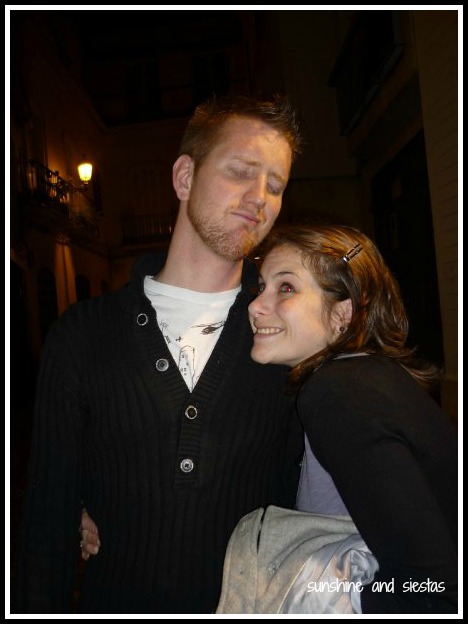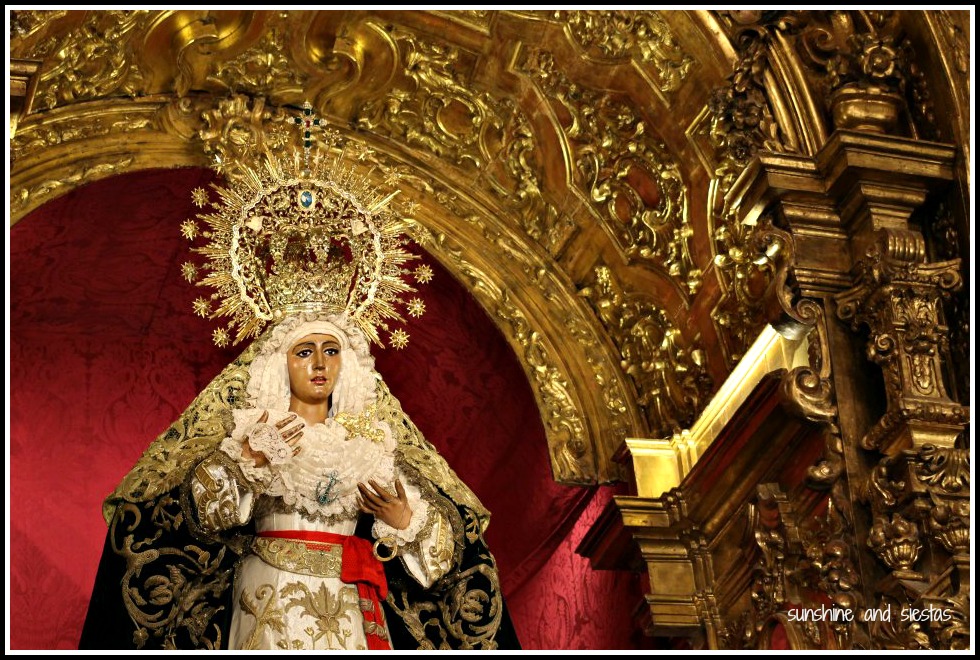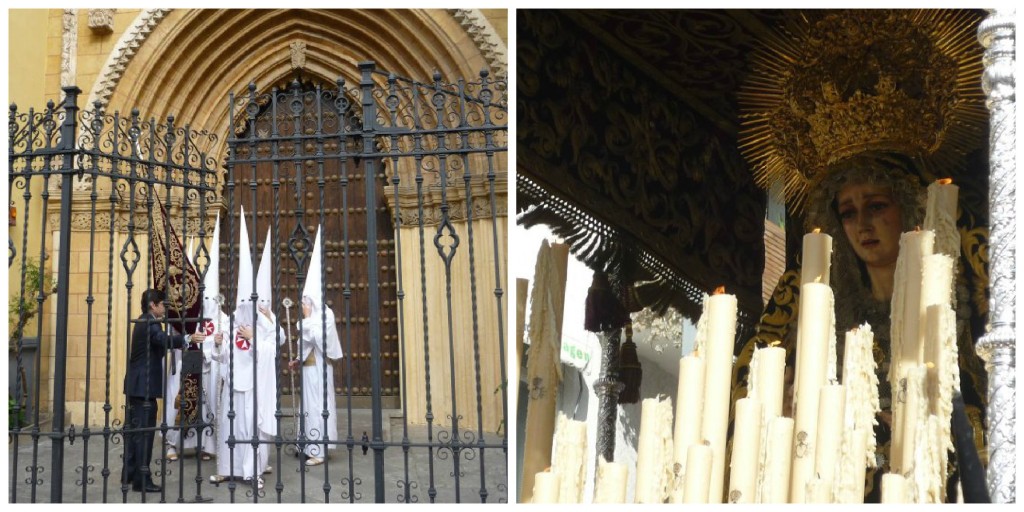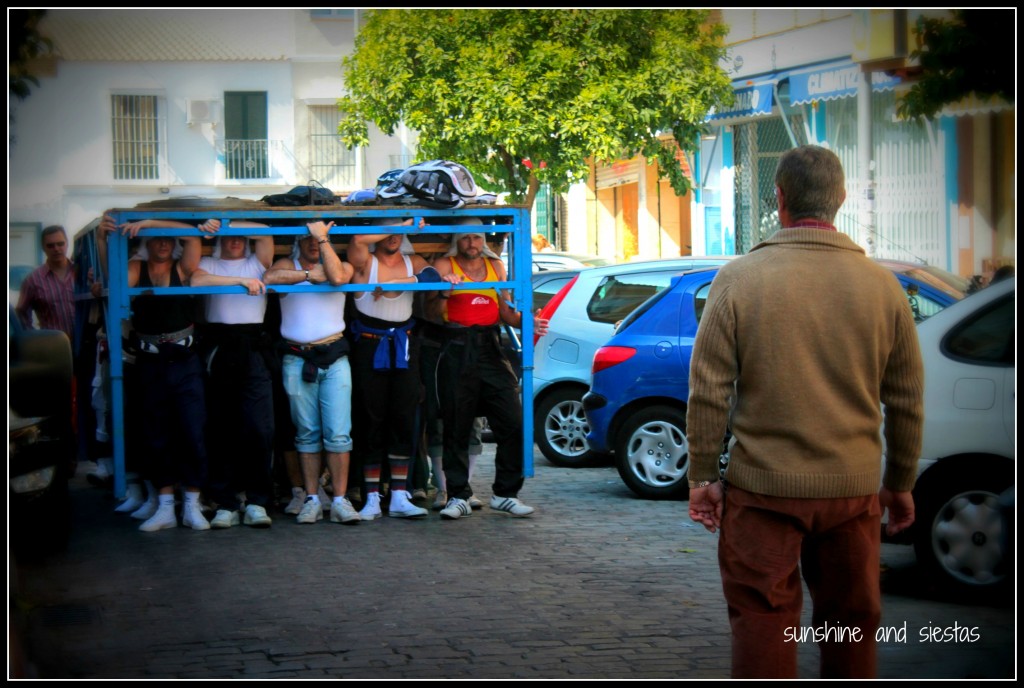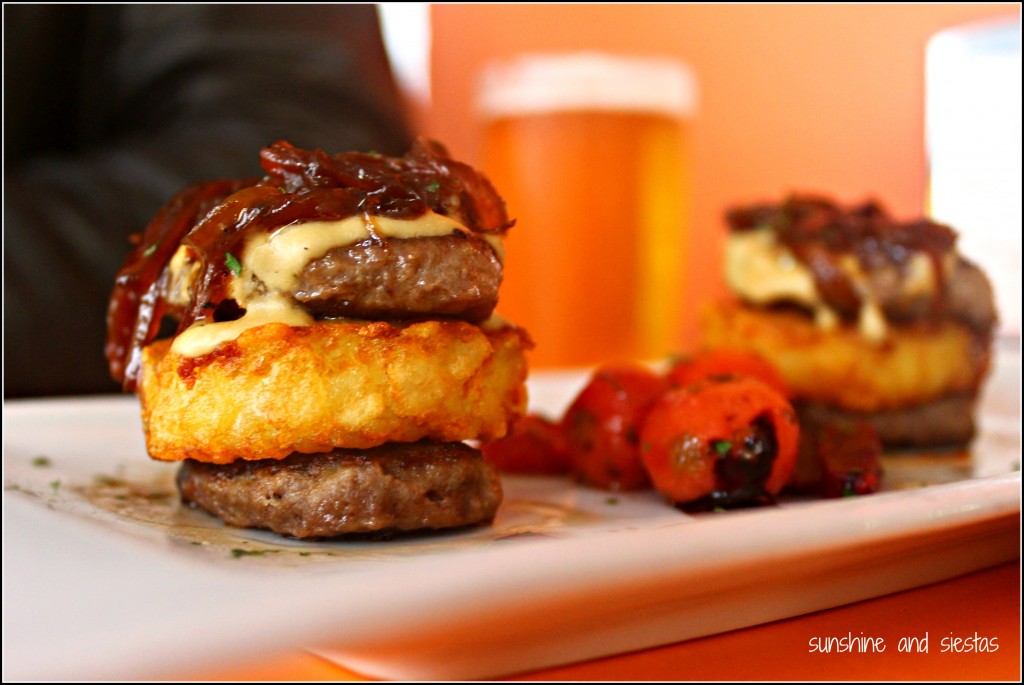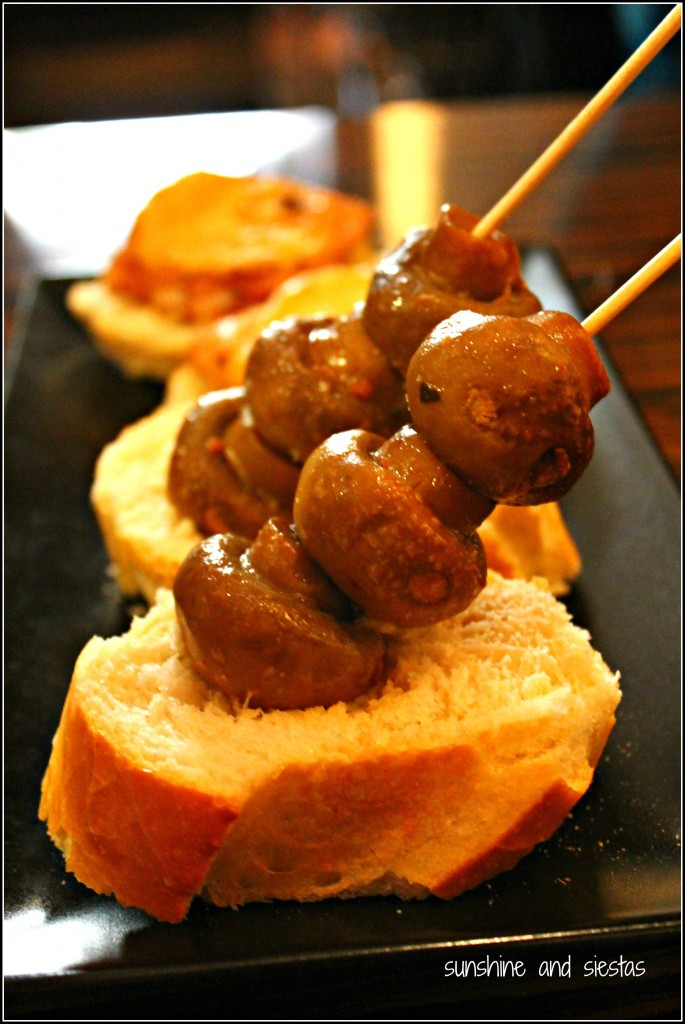Danny and I decided to make one last stop for the night, mostly fueled by our bladders than our ganas for another beer. I ordered a Coke and dipped into the bathroom while Danny paid.
Two minutes later, as I left, the lights had been lowered, and Danny looked pale under the glow of a projector. He pointed to a screen, which showed an image of a bloody Jesus from a black-and-white film.
“Oh, you get used to that,¨I cooed, but he had already downed his beer and was halfway through the door. Novatos.
For me, the week-long revelry that surrounds Seville’s Holy Week has meant just a ten-day travel break for me. Living in Triana’s vortex of cofradías meant that braving Semana Santa, locked inside my house while life-sized depictions of the Passion, Death and Resurrection of Jesus Christ passed below my window. Paso de pasos, quite frankly.
Still, I have become more and more fascinated in the pageantry and culture of Holy Week, and often take guests to bars full of musty busts of the Virgin Mother, spiderweb-covered chalices and black and white photos of anguished Christs to explain the parts of the cofradía and their symbolism. Plus, I kinda love having Jesus watch me have a cold glass of beer and snack of olives, I guess?
Bar Santa Ana – Calle Pureza, Triana
Far and away my favorite of the bunch is Bar Santa Ana. It’s the typical old man bar around the corner from your flat where you feel intimidated to walk into, but secretly have always wanted to – dozens of images of the nearby Esperanza de Triana and San Gonzalo brotherhoods. Bullfights are run on TV while you sip your beer, tabbed up right in front of you on the bar, and the countdown to Palm Sunday hangs over your head while you eat from a huge tapas menu.
La Freqsuita – Calle Mateos Gago
With a name like the fresh one, La Fresquita has a lot to live up to with its beer. Still, it’s served cold and often accompanied with olives or even a pocket calendar. The small space – its biggest downside – is covered floor to ceiling in pictures of processions and a countdown to Palm Sunday. Since the bar is right off of the main tourist sites and centrally located on Mateos Gago, many patrons spill out onto the sidewalk in front of the bar.
Kiosko La Melva – Manuel Siurot, s/n (at the cross of Cardenal Ilundain). Hours depend on the boss, Eli.
My weekday bar is always Kiosko La Melva. Once a shack used to provide workers from the ABC Newspaper offices with their midday snacks and beers, the small structure is unbeatable for cold beer (which only costs 1€!) and small, delectable fish sandwiches. Eli and Moises, the wise cracking buddies who man the bar during the mornings and evenings, collect memorabilia from Semana Santas past to fill the bar’s small interior. Their favorites? The Jesus del Gran Poder and la Macarena, who are associated with the Real Betis football club! You can take the 1 or the 3 bus to the bar, which is located near the Virgen del Rocio Hospital. Closed when raining, Saturday nights and all day Sunday.
Garlochí – Calle Boteros, 26, Alfalfa.
Seville’s tackiest bar deserves a mention here, although it’s become a bit of a tourist attraction. Wafts of incense arrive to the street as a lifelike Virgin Mary, eyes towards the heavens, guards the door. The plush decor and aptly named drinks – like Christ’s Blood – make it a favorite among tourists, but there’s a “Garlochi Lite” next door with cheaper drinks and not so many eyes starting at you as you pound your cervezas.
As a non-capillita, I had to ask my dear friend La Dolan for her top picks for Semana Santa bars around the city. She told me of Carrerra Oficial, just steps from Plaza San Lorenzo and the Basilica del Jesus del Gran Poder that has put a replica of the famous church’s facades as part of its decor. The bar is on Javier Lasso de la Vega, 3.
Have you ever experienced Semana Santa in Seville? Or been to a Holy Week bar here?
